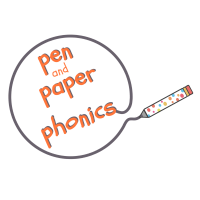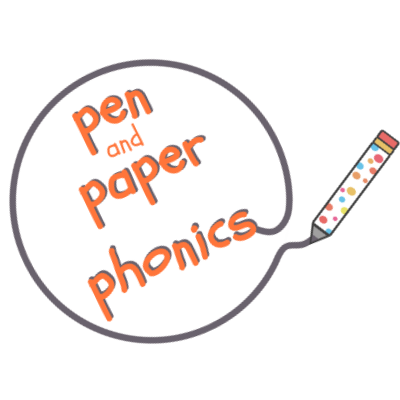
Have you got young children? Are you reeling from the sudden, enforced switch to online learning? I guarantee you, you are not alone!
Like many, your first online experience might have been less than ideal. Rushed and under prepared, connection issues, old technology problems, a lack of focus and meaningful learning…I’m sure you can add to the list.
And now Summer is here, you might be turning to online lessons as a way to keep your child focused and learning. Or, maybe you just want to know more about how it all works, just in case we don’t return to normal in the Fall.
Although online teaching, even for young elementary students has been around for a while, it is now most definitely in the spotlight. And so you might be wondering, how to help your child get the most out of this newer way of learning.
How to Get the Most Out of Online Learning
I’ve been a reading tutor for three years, and before that a classroom teacher for over ten years. I had dabbled in online teaching as a tutor, up until March this year. And then, everything went online.
The more I tutor online, the more I see that there are some simple but very effective preparations that will help young children get the most out of online lessons.
Simply put, these are:

- Invest in the right equipment,
- Prepare well,
- Create a learning environment,
- Allow time to adjust.
*Want a handy checklist? Click here for free downloadable checklists to help your child get the most out of online learning.
Online Learning – The New Normal
There are huge advantages to learning online. To name just a few – it’s fun and engaging, and it is easy to tailor to the individual needs of a learner.
But I’m sure most of us have found out, whether parents or teachers, that switching from a physical classroom to an online one is not just about changing the physical location.
We need a change to how we approach it.
Online Learning – A Different Approach
It’s not that the content of an online lesson is different. But how you approach online learning is key to how much a child will get from it.
Just like when you get your child ready to go to school, you have a checklist of things they need. These include things like book bags, lunch, and completed homework. When you get ready for online lessons, there is another checklist:
1. Optimize Online Learning by Investing in Equipment
Headphones

These are really important because they allow the child to focus in on listening. It also helps the teacher to hear the child clearly. It’s great if the headphones are child size. This means they are more comfortable to wear, and don’t cause a distraction during the lesson.

Touch screen:
Young children often struggle to use a mouse. Sometimes this is because they are not used to it. And, sometimes it is because they have not yet developed the hand eye coordination needed. A touch screen means they can easily move objects around onscreen and interact with the lesson.

Stylus:
A stylus will help with writing. Young children don’t necessarily have great typing skills, and trying to write letters or numbers with a mouse is very difficult, even for adults. Students can use their finger on a touch screen, but a stylus will give them more control.

I know, having been thrown into online learning, we don’t all have what we need, or the means to get it. And so in reality all that is necessary is a computer/screen and an internet connection. But if we are talking about getting the most out of online learning, then using headphones, a touchscreen and a stylus added to the most stable internet connection you can manage, is going to help your child make the most of online learning.

Pencil and Paper
It is also helpful to make sure they have a pen and paper nearby and space to write. Inevitably, there will be times when something goes wrong. For instance, the stylus runs out of battery, or a glitch stops a page from loading. So being able to switch quickly to writing answers on paper can help get a derailed lesson back on track.
2. Optimize Online Learning by Preparing Well

This might seem obvious, but make sure your child is ready.
Of course, learning from home is going to be more relaxed than formal school. However, it is still important to be ready for learning. This might mean a good night’s sleep, or making sure you have had breakfast. Like in all learning, online or not, children cannot learn their best if they are tired or hungry or uncomfortable.

I know it sounds a bit school ma’am-y, (sorry!) but being on time and well prepared can make such a difference to how much learning takes place in a lesson. Just like in school, being consistently late is detrimental to a child’s learning. And being late to an online class isn’t any different.
3. Optimize Online Learning by Creating a ‘Learning Environment’.

The term ‘learning environment’ refers to how easy it is for a child to learn in the place where they are. Part of this is the emotional or mental environment (see above). The other part is the physical area where students are.
So, make sure they have a chair and desk to sit at, and that they are clear from distractions.

I know, an appeal of online learning is that it can be done anywhere. While that is true, it’s also true that if a learner is lounging on the couch, they are more likely to be in a frame of mind to be entertained, rather than an active participant in their learning.
A mindset change?
Before the lock down, when children were in front of screens, it was mainly for entertainment, for example gaming, or watching TV.
But now, screens are also for active learning. So we need change in how we view screen time. Children need to be able to actively engage in their learning. That means they need to be concentrating, focused, and in an environment that helps them. They need to be receptive to learning, and lying on a couch, or sitting next to a pool, or being in the car, is not the best way to help them settle into a lesson.
4. Optimize Online Learning by Allowing Time to Adjust
It takes time to get used to online learning. Don’t worry if your child does not take to it straight away, or finds it hard to settle down and concentrate. In many ways, it’s a completely different style of learning than in-person, classroom learning.

For example, there are more distractions at home than in the classroom. Also, there is sometimes a different level of independence required in online learning.
I also think that the younger a child is the more difficult it is for them to adjust quickly to online learning. They are still learning the skill of concentrating, and online learning can add another layer to this already difficult task. In addition, much of teaching younger children relies heavily on eye contact and body language and these are difficult things to communicate online.
A Simple, but Essential Checklist
So in short, take the time to prepare well, to provide the right environment and to source the right equipment. Give your child time to adjust to the idea of online learning. These things, simple as they are, will help the process go a lot more smoothly.
And most importantly – don’t beat yourself up about online learning. We have all found ourselves in ‘unprecedented times’, and we won’t all have all the right equipment or necessary space available straight away. That’s okay. Children adapt well, and in no time at all they will be learning better online.
Free Downloads:

Parent and Child Checklists for Online Learning
Related Content:
There are lots of phonics activities on this site to download, print and use with your child or student. Click here for a full list.
Want more online resources? Check out this mega list of online resources.





